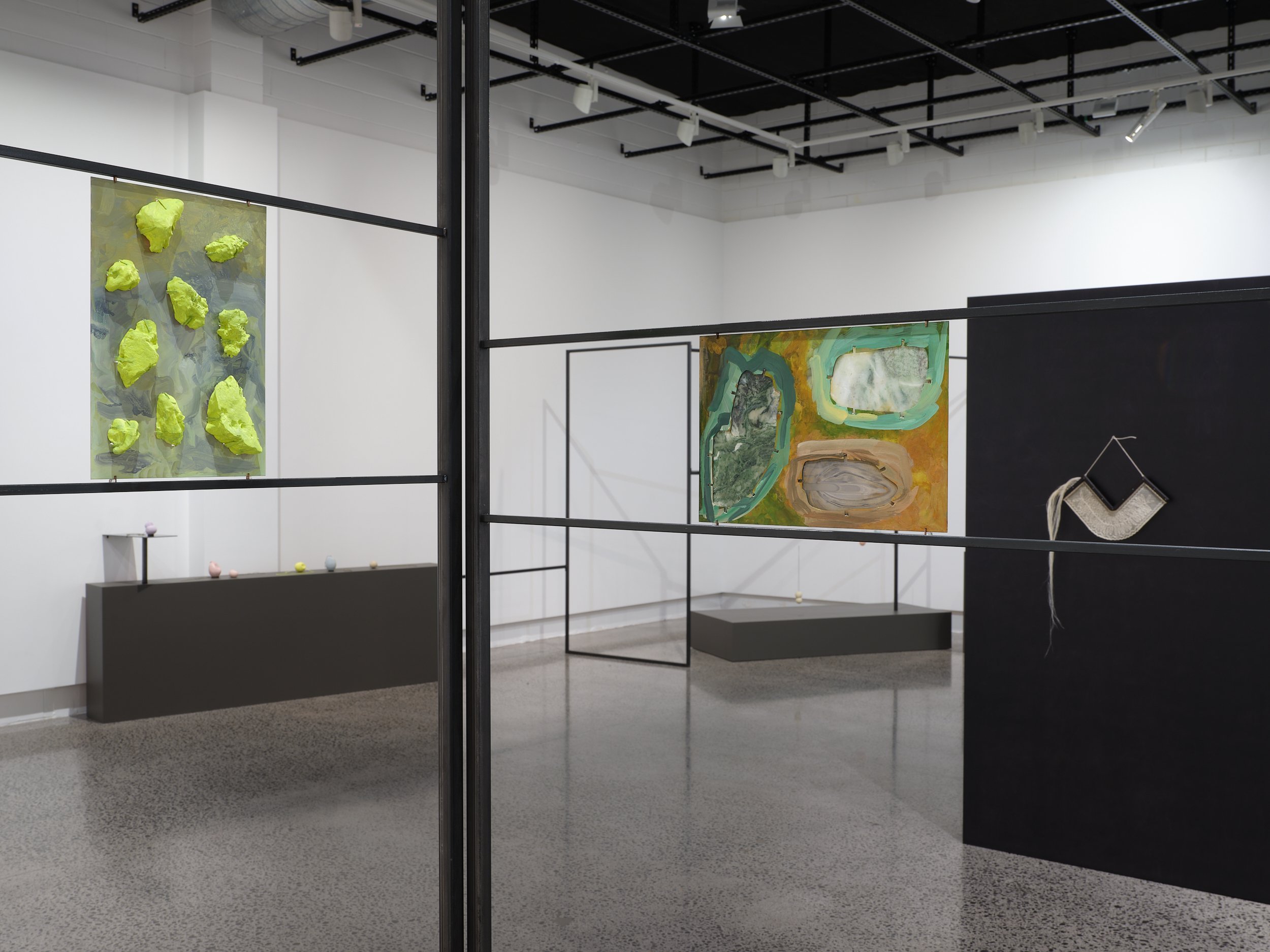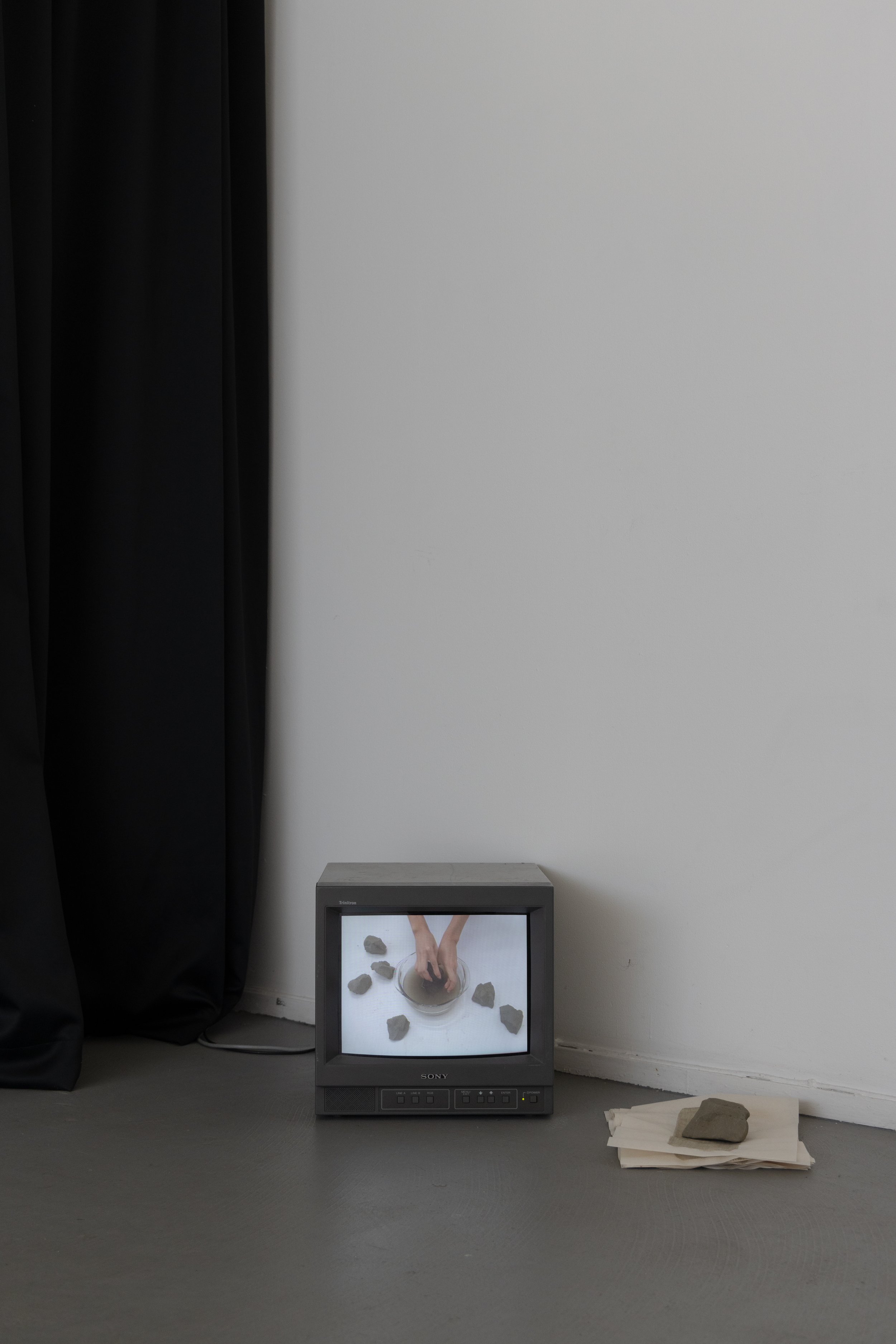Notes On: Worry Stones
Connie Brown on A Stone, an Echo, a Sign: Aotearoa Jewellery Triennial, curated by K. Emma Ng with works by Becky Bliss, Neke Moa, Shelley Norton, Rowan Panther, Moniek Schrijer, Raewyn Walsh; Objectspace, 10 September – 20 November 2022.
Protecting its wearer is one of jewellery’s oldest functions. A Stone, an Echo, a Sign: Aotearoa Jewellery Triennial—by inviting us to think of jewellery “in heirloom terms”—tips this relation to one in which the wearer is the protector of the object, its value and meaning. What it means to properly ‘protect’ these heirlooms, however, the exhibition takes a chisel to. Rarely is it a matter of preserving objects in their original state, but of enacting minor iconoclasms that remake the precious thing for contemporary times as questions of legacy, inheritance and kaitiakitanga are turbulent and pressing in.
Several of the participating artists push back against the anxiety of loss, of natural resources and habitats as much as stories and craft traditions. Many also bring the heirloom object into conversation with the foraged thing, working out what kind of personal, close-to-the-body relationships might be possible between people and environment through jewellery’s paradigm.
Neke Moa’s pieces are a nexus of all of these ideas. A collection of them is hung in the far corner of the gallery, high, as the hunter might mount his stag’s head. But her’s are deathless treasures, made of things offered up by bush and sea, by Tāne Mahuta and Tangaroa, and gathered by the artist from her surrounds in coastal Ōtaki. Into the already sumptuous curves and materialities of the shells, fibres and driftwood, Moa works the rages, the frolics, the romances of the atua who made up Te Papakāinga ō Papaīra—more holdable stories than wearable ornaments. They’re like Himi’s ‘music hutches’ in The Bone People, those spiral constructions of beach debris that the wind and the surf and the listener’s pulse beat through “to make something like music.”[i] Getting close to Moa’s objects, it is easy to imagine that the residual sounds of the sea might be caught within them, and that the whispered pūrākoa of Papīra and her tuākana might be caught within those.[ii]
The loom of the heirloom denotes a tool, something we inherit in order to put to use. A Stone, an Echo, a Sign, with its provocation to treat jewellery ‘as a verb’, returns us to this meaning, where the heirloom, like the stone, is formed of countless gestures over time; like the echo, is a message sent out then returned to its origin; and like the sign, is always up for interpretation.
Footnotes
[i] Keri Hulme, The Bone People, (Hodder and Stoughton, 1985), 137.
[ii] Moa and her partner, Paula Conroy, have gathered these stories and recorded them in a hand-out that accompanies the installation.
All images: A Stone, an Echo, a Sign: Aotearoa Jewellery Triennial. Installation view, Objectspace, Tāmaki Makaurau, October 2022. Photography: Sam Hartnett
Neke Moa, Te Papakāinga ō Papaīra, 2022. Installation view, Objectspace, October 2022
Becky Bliss, Casting a shade, 2022. Installation view, Objectspace, 2022
(front) Becky Bliss, Casting a shade, 2022; (back) Shelley Norton, Props, 2022. Installation view, Objectspace, 2022
Rowan Panther, The Kohumaru Collection, 2022. Installation view, Objectspace, 2022
Moniek Schrijer, Almanac of Synthetic Substrates, 2021-22. Installation view, Objectspace, October 2022
Raewyn Walsh, Hollow Wear (detail), 2022. Installation view, Objectspace, October 2022
Becky Bliss, Catching a shade (detail), 2022. Installation view, Objectspace, October 2022
Neke Moa, Haumietiketike, 2022. Installation view, Objectspace, October 2022
Shelley Norton, Props (detail), 2022. Installation view, Objectspace, October 2022
(front) Moniek Schrijer, Almanac of Synthetic Substrates, 2022; (back left) Raewyn Walsh, Hollow Wear, 2022; (back right) Rowan Panther, The Kohumaru Collection, 2022. Installation view, Objectspace, October 2022






















Connie Brown on Zoe Thompson-Moore’s Open-field; RM Gallery, 23 November - 17 December